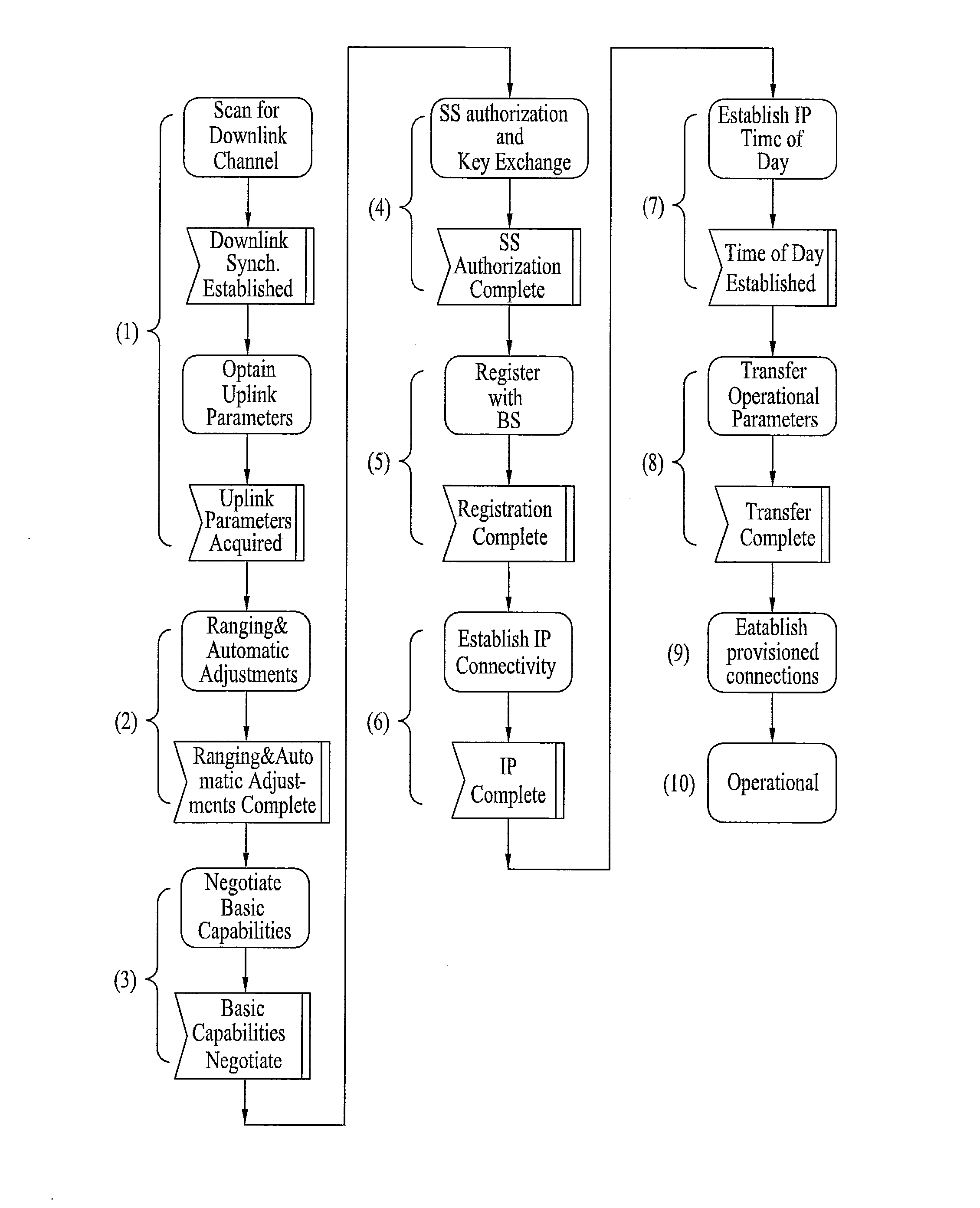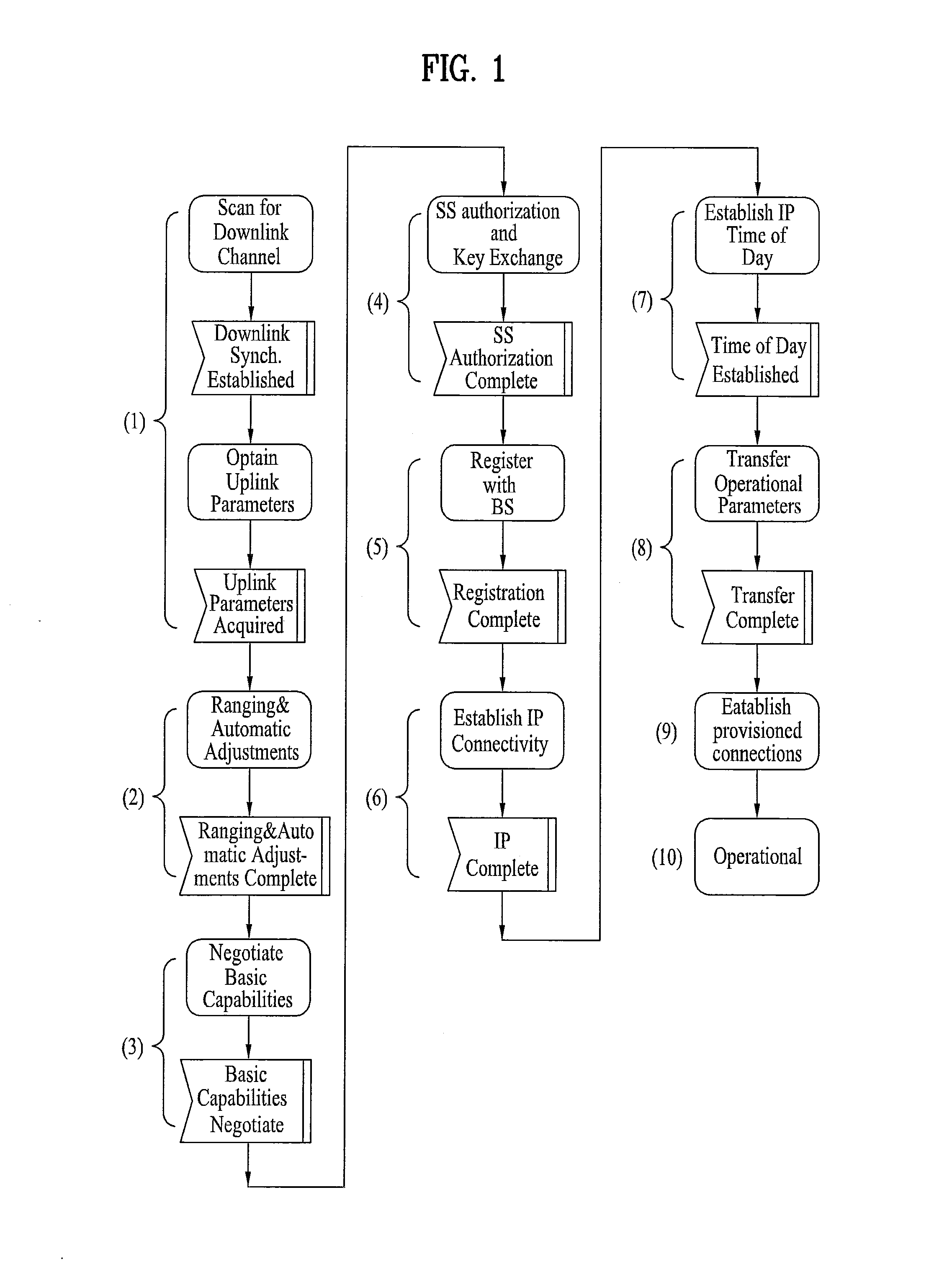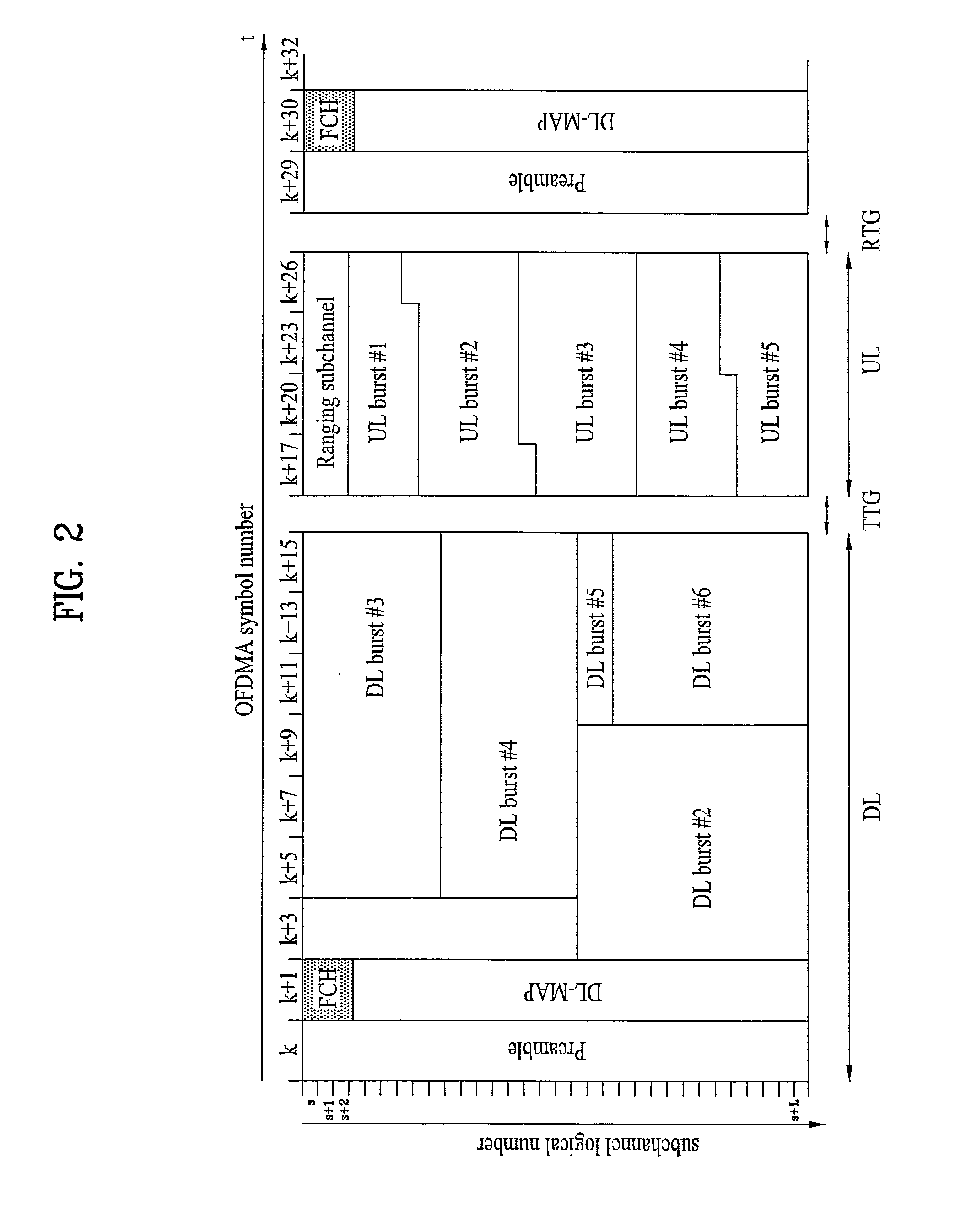Ranging structure, multiplexing method and signaling method for legacy support mode
- Summary
- Abstract
- Description
- Claims
- Application Information
AI Technical Summary
Benefits of technology
Problems solved by technology
Method used
Image
Examples
embodiment 1-1
Method of Using Time / Frequency Resource and Code
[0103]In (a) to (c) of FIG. 9, an example for discriminating a 16e ranging structure and a 16m ranging structure in legacy support mode according to time / frequency resource and / or code is shown. In this drawing, each box indicates a ranging slot.
[0104]Referring to (a) of FIG. 9, a 16e ranging structure and a 16m ranging structure use the same time / frequency resource. And, each of the ranging structures is discriminated according to a code. In this case, additional time / frequency resource allocation is unnecessary for the 16m ranging structure. In particular, a 16e terminal and a 16m terminal try ranging using 16m codes. The 16e ranging slot is usable for 16m ranging entirely or in part.
[0105]Referring to (b) of FIG. 9, a 16e ranging structure and a 16m ranging structure use different time / frequency resources, respectively. Since the 16e ranging structure and the 16m ranging structure are discriminated from each other through the time / f...
embodiment 1-2
Allocation Method of Additional 16m Ranging Codes
[0114]Assuming the exemplary situation shown in FIG. 9, it is able to set a 16m code set for a 16e ranging structure to obtain a status of a ranging-attempting terminal (e.g., 16e terminal, 16m terminal). Previous 16e codes are divided and some of the divided 16e codes can be reserved for 16m ranging. In this case, code resources used for a 16e ranging structure are reduced.
[0115]The 16m codes can be new codes irrelevant to the previous 16e codes. Considering a case that resources of the 16e ranging structure are overlapped with those of the 16m ranging structure, the new codes for the 16m ranging can less affect legacy ranging performance with good cross-correlation property in association with the codes for the 16e ranging.
[0116]Assuming a case that resources of the 16e ranging structure are not overlapped with those of the 16m ranging structure, if inter-cell interference with a code reuse factor is taken into consideration, the cr...
embodiment 1-3
Allocation Method of New 16m Ranging Codes
[0192]In the foregoing description, a method of generating 16m codes using a PN code used for 16e codes has been discussed. In the following description, a method of generating 16m ranging codes using a code different from a short PN code shall be discussed. For instance, it is able to generate 16m ranging codes using a CAZAC sequence. In this case, it may be difficult to generate a code of a specific length due to the property of the CAZAC sequence. For example, when a length of 16m ranging code is not a prime number, the number of codes generated with orthogonality is small in case of CAZAC series sequence (e.g., ZC (Zadoff-Chu) sequence). Therefore, after a ZC sequence having a prime number length adjacent to a length of 16m ranging code has been generated, a length of the ZC sequence is preferably modified.
[0193]For instance, after a ZC sequence having a smallest prime number length among numbers greater than a necessary length has been ...
PUM
 Login to View More
Login to View More Abstract
Description
Claims
Application Information
 Login to View More
Login to View More - R&D
- Intellectual Property
- Life Sciences
- Materials
- Tech Scout
- Unparalleled Data Quality
- Higher Quality Content
- 60% Fewer Hallucinations
Browse by: Latest US Patents, China's latest patents, Technical Efficacy Thesaurus, Application Domain, Technology Topic, Popular Technical Reports.
© 2025 PatSnap. All rights reserved.Legal|Privacy policy|Modern Slavery Act Transparency Statement|Sitemap|About US| Contact US: help@patsnap.com



